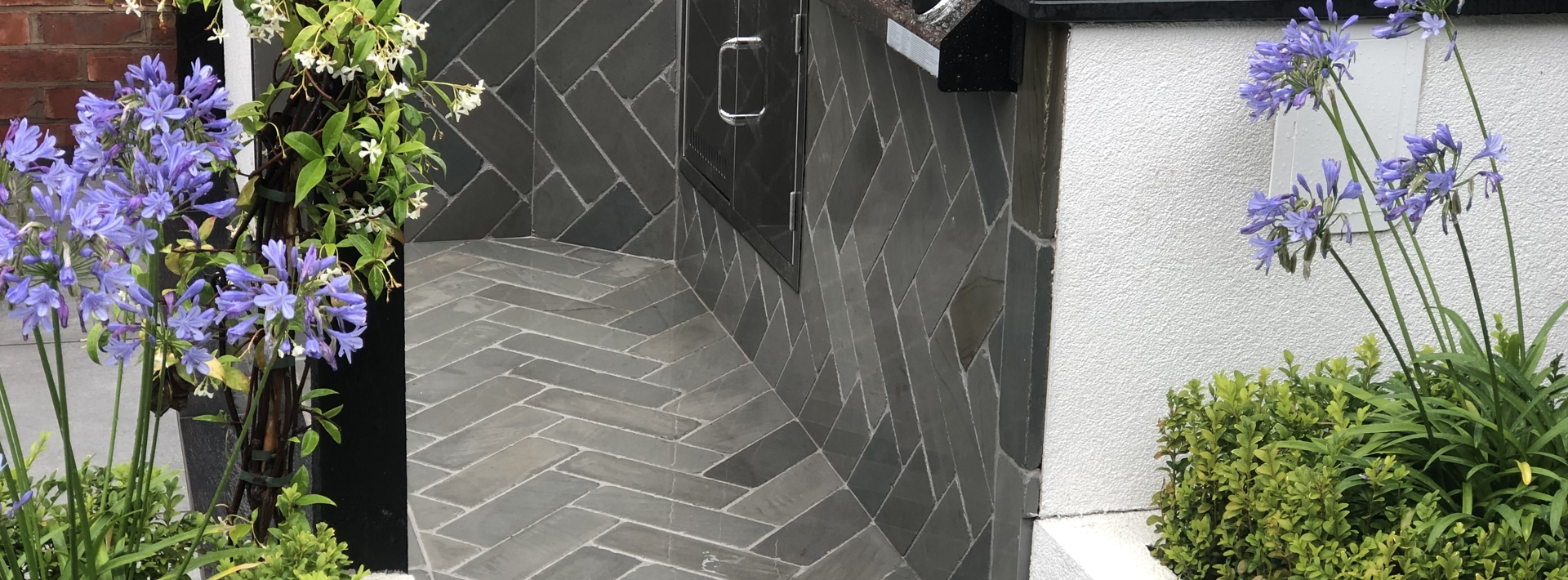Blog
Grass-free gardens are one of the most low-maintenance types, with a very small amount of upkeep required. There is no need to mow or water a lawn area, meaning you can spend more time enjoying being outside in your garden without having to worry about keeping it neat and tidy.
This isn’t to say you should do away with all plants, greenery and flowers, however, as these features are essential for our wildlife and the environment as a whole. Whether you’re considering removing a lawn, or researching ideas for grass-free garden design, always make sure you consider how you can add greenery to your design.
From simple concrete pavers to fancy decking and lush ground covers, we hope the ideas listed below bring you inspiration for how you can create a fabulous garden without grass.
1. Create a kitchen garden
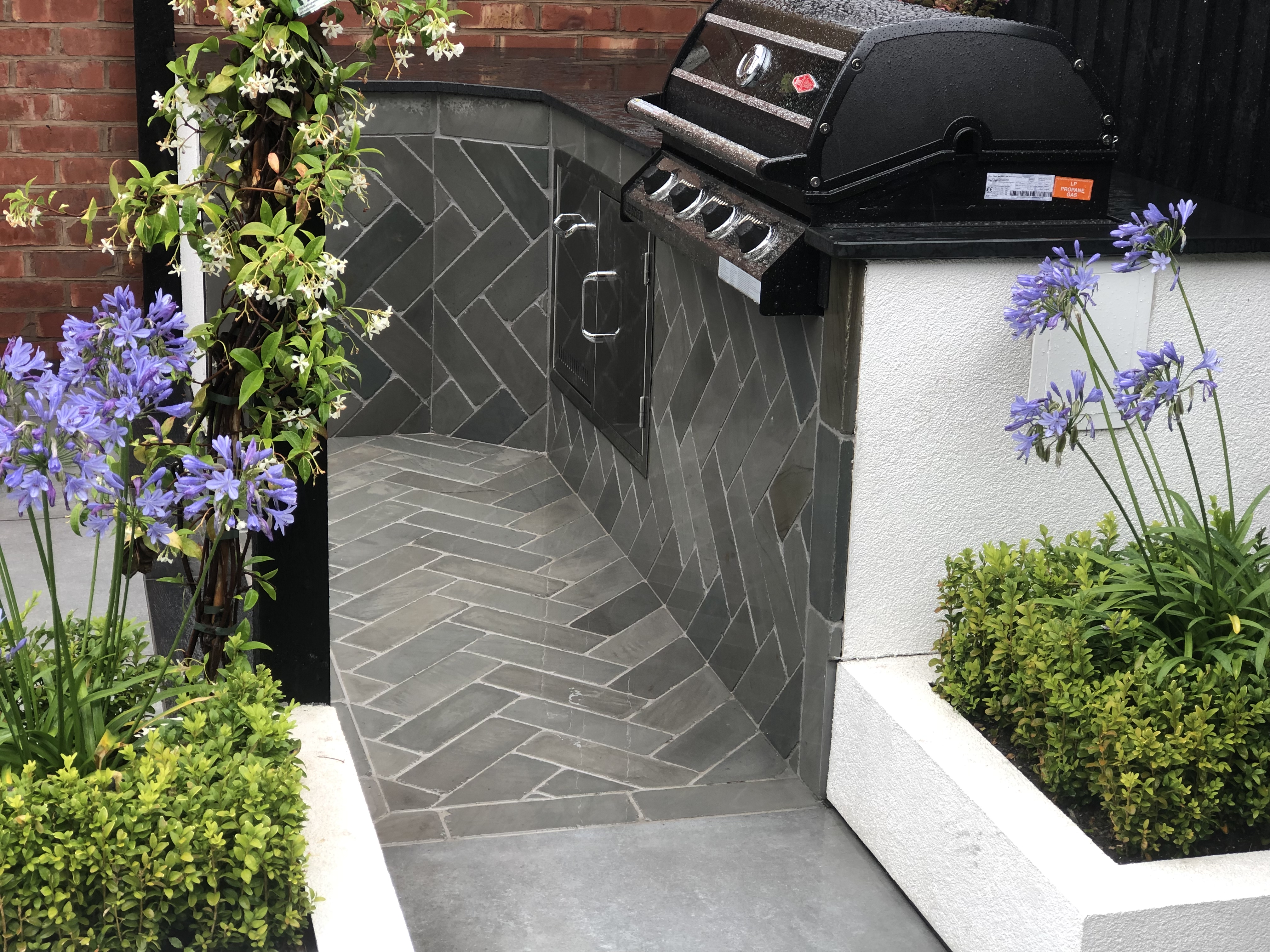
Alvanley® Pavers Silver Blend
A vegetable garden is a great replacement for traditional lawns, as most vegetables will thrive in the same conditions. Provided your turf has been growing in soil with good drainage and in full sun, you won't need to make too many changes before starting your kitchen garden.
While a vegetable garden still requires maintenance, it can be much more rewarding than a lawn. If you have a small garden, look at growing veggies vertically as much as possible to ensure you get a good yield from the available planting space.
Consider planting things like apple, plum, and pear trees - all of which thrive in the British climate - or setting up a mini greenhouse for more exotic produce that needs warmer growing conditions. With a kitchen garden, you’ll soon be able to supplement your grocery shopping with homegrown greens straight from your backyard.
Kitchen gardens work best when planted in raised beds - these can be ready-made from recycled plastic or, if you’re feeling adventurous with DIY, built from pieces of reclaimed wood. Lay a garden path using sustainably-sourced mulch in-between the beds to complete the aesthetic.
2. Turn your yard into a meadow

If you’re reluctant to get rid of the lawn but struggling to manage the upkeep, then a meadow-style garden is perfect for you. To achieve this look, you’ll need to sow yellow-rattle in the November before you plan to sow any wildflower seeds. This is because yellow-rattle is semi-parasitic on grass roots meaning it has the effect of preventing grasses from growing and overcrowding the roots of the wildflowers.
Be sure to get a mix that is best suited to your soil type - your local garden centres can help with this. Perennial flowers will take a year or two to establish themselves, so you may need to sow some annual seeds to have flowers in the first warm season.
To preserve the rustic look and feel of your meadow-style garden, lay a natural stone pathway through the space that winds gently from one end to the other. This could lead to a pond or water feature if you want to enhance the tranquillity of your garden even further. Alternatively, simply mow a strip out of your meadow to act as a natural pathway instead.
3. Opt for a carpet of plants
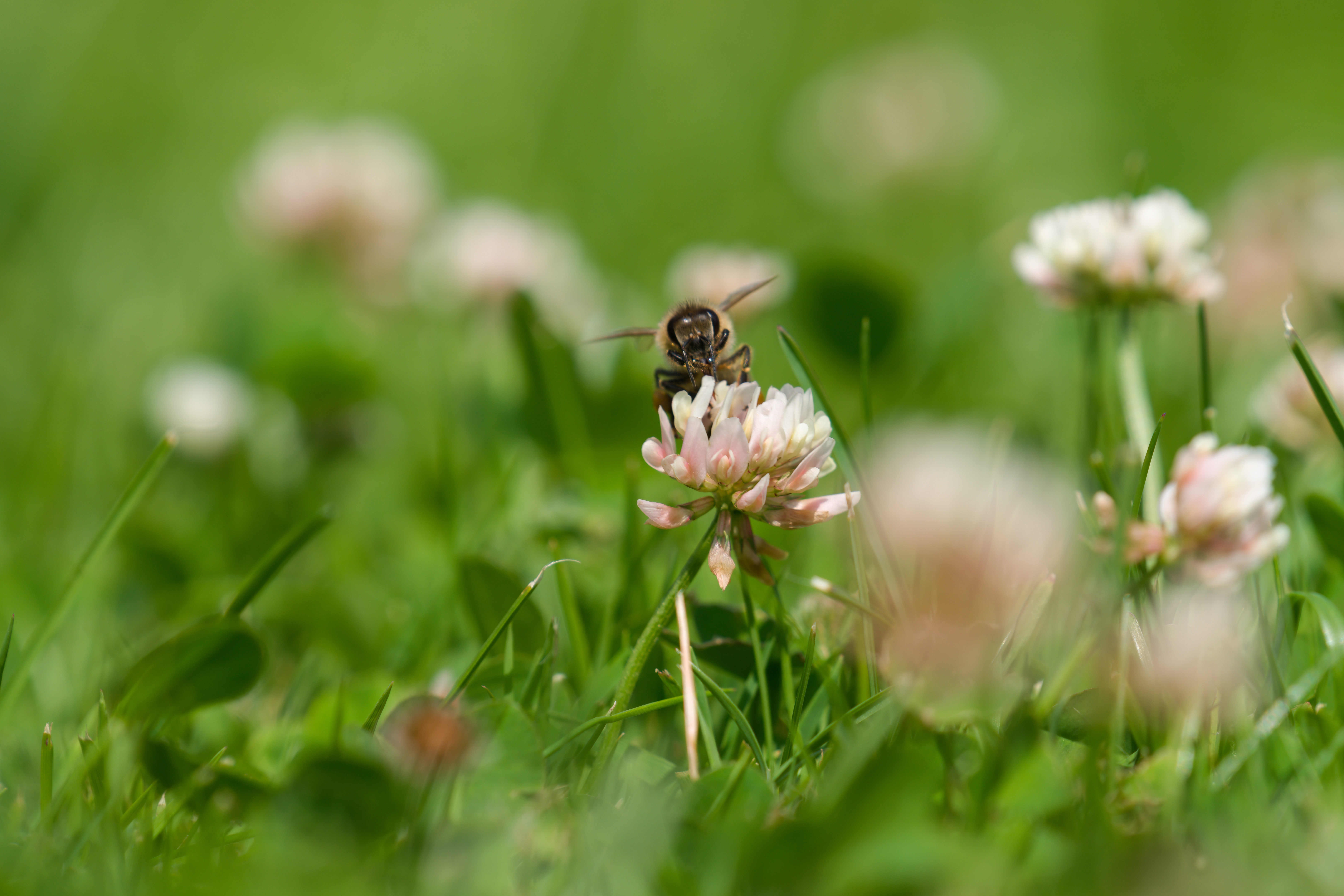
Love the lush green look of the lawn, but want something eco-friendly that requires less maintenance? Try a groundcover carpet. You'll avoid the time-consuming upkeep required by a lawn, save water, improve your soil, and encourage ecological balance by providing food for insects and pollinators.
While the alternatives to grass aren't quite as hardy, their other benefits outweigh the cons. To make sure your plant carpet stays looking good, install stepping stones along the route - this will enhance the design of your garden space and stop bare spots from appearing.
Plants to consider for your carpet include white clover, creeping jenny, thyme and oregano. Alternatively, rewild your lawn with native groundcover plants that would normally grow in your area.
4. Simplify with gravel
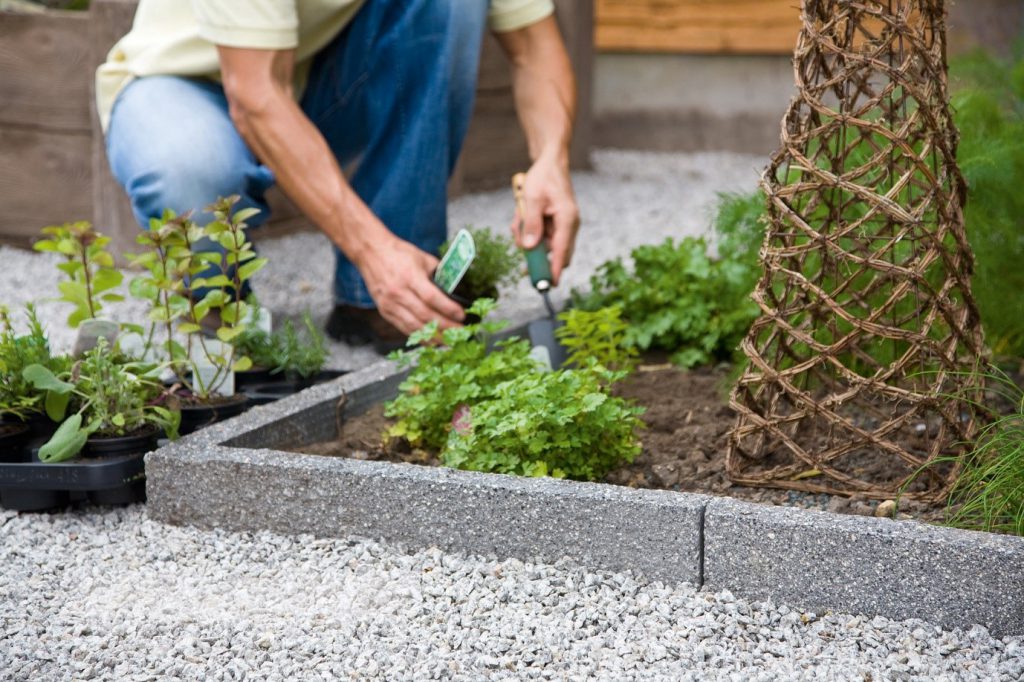
The ultimate low-maintenance solution for a grass-free garden is gravel. It's easy to install and very versatile, with lots of different colour options to suit a whole range of design schemes. To lay gravel in your garden, you’ll need to use a geotextile membrane (a type of burying plastic) as the base, especially if you are planning to cover large areas.
Gravel provides good drainage and ground cover and doesn't require the use of a lawn mover. It is permeable, so it will also absorb rainwater which will assist in preventing floods.
This versatile substrate can be used for garden paths, patios, or even as ground cover for an entire backyard. Intersperse the crunchy stones with drought-tolerant plants to soften the look and add visual interest.
5. Convert your lawn to a patio

Scoutmoor paving patio
Building a patio in place of your lawn will save you a lot of maintenance time and will create a lovely space for alfresco dining. Choose durable materials such as paving blocks, concrete, or granite and make sure it blends well with your home's exterior brickwork.
The initial costs for a patio can be on the higher side, but it will save you lots of time and money in the long run. As a lawn will soak up rainwater, when you’re paving over it you need to remember to incorporate good water runoff and drainage solutions into your patio to. This will help prevent flooding and ensure that your outdoor area is usable in all seasons.
You can create a more environmentally friendly patio by using permeable or sustainably-sourced flooring and planting low-lying vegetation in between the paving stones.
6. Use rocks to add layers
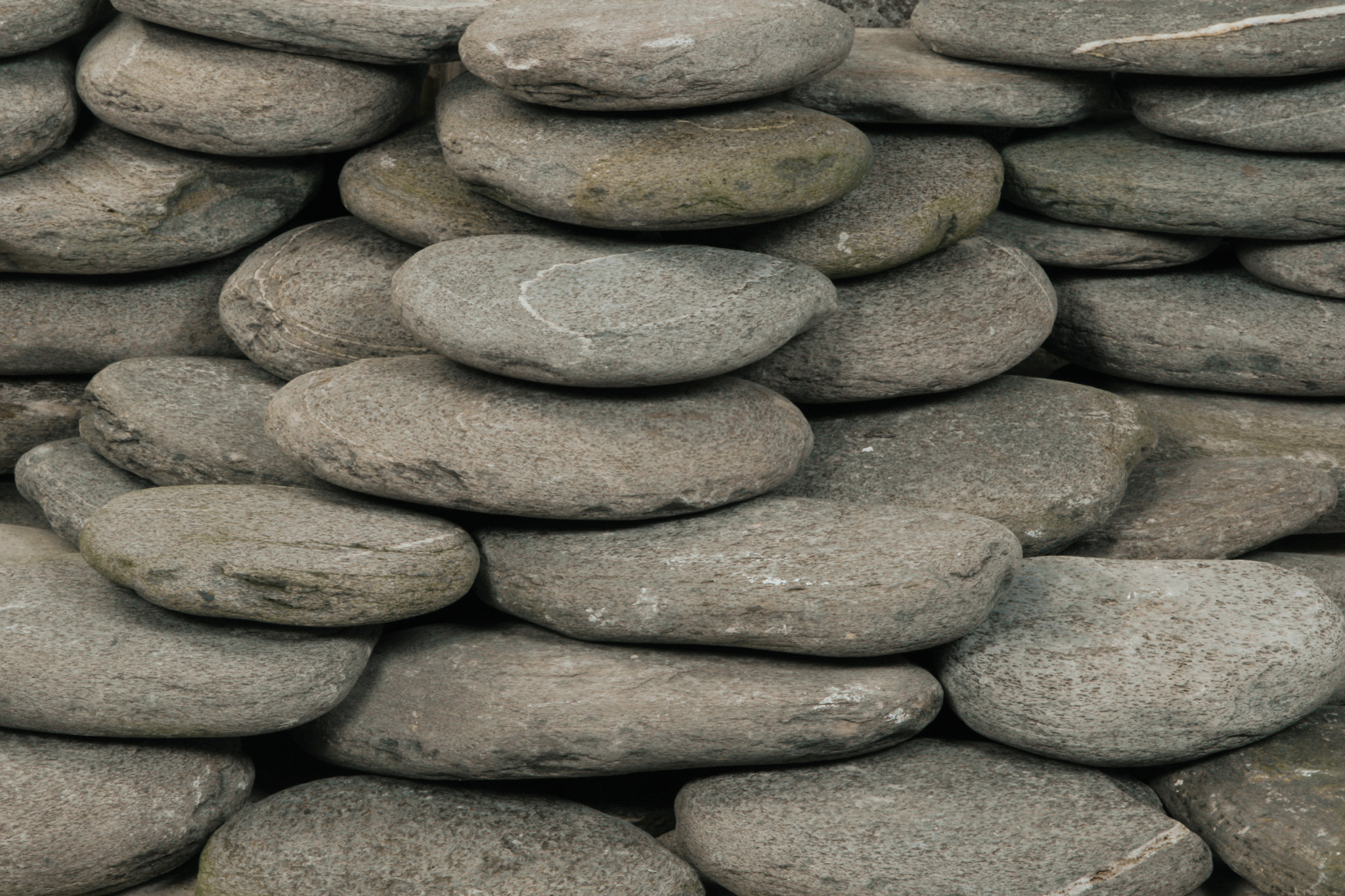
To add some visual depth to your front or back garden, consider creating a rock garden or building raised areas bordered with rocks and stones. This will also add a variety of colours and textures to the space and will require little to no maintenance. What’s more, the nooks and crannies in-between the rocks are brilliant for insects and invertebrates, both of which are crucial for maintaining a healthy ecosystem in your outdoor space.
Plant flowers and shrubs amongst the rocks to add pops of colour in the warmer months and help to attract an even wider array of wildlife into your garden.
7. Soften the edges with moss
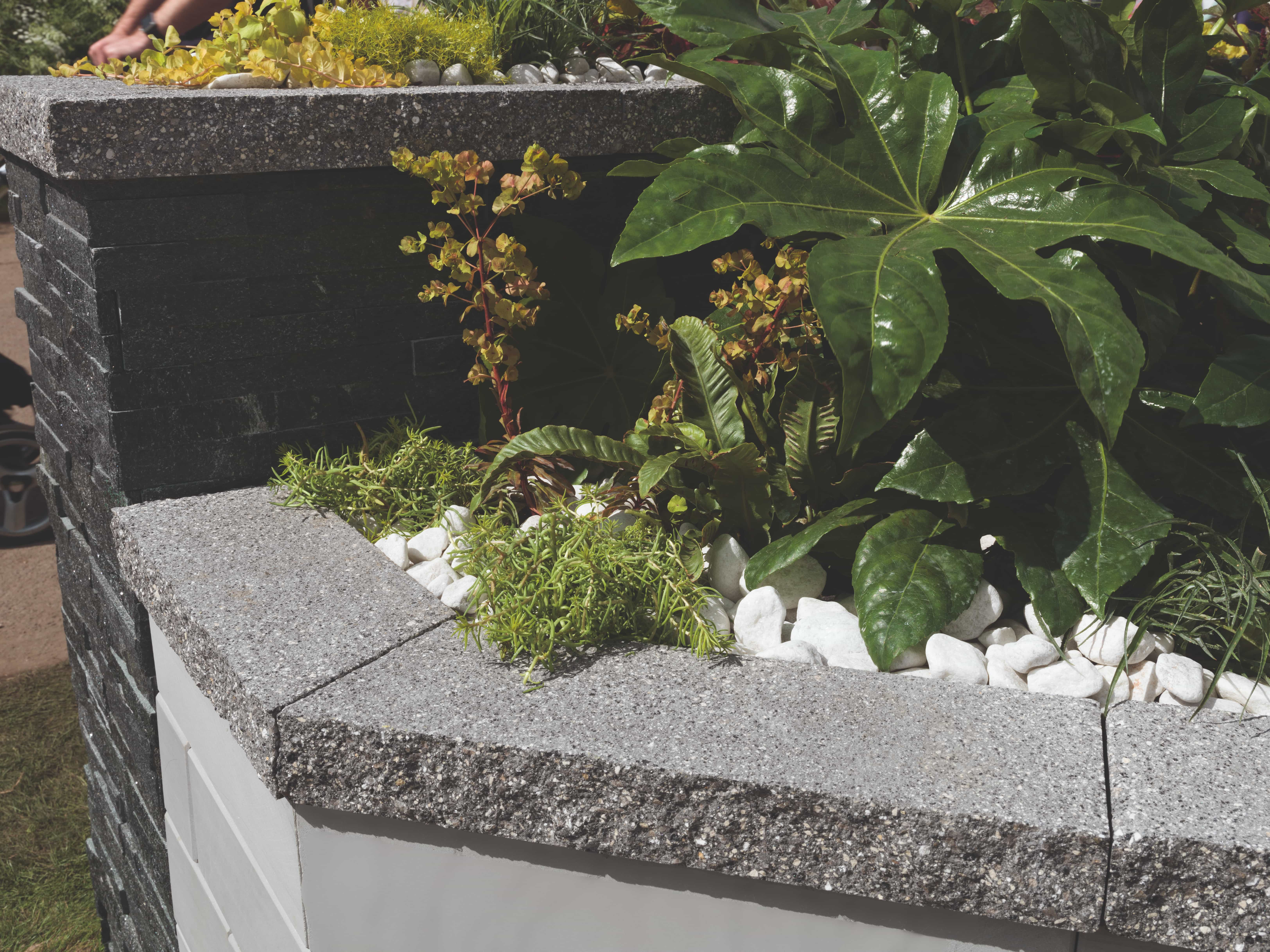
Stoneface® Drystack Veneer Walling in Nero Quartzite with Argent® Coping
Growing moss in place of your lawn will result in a soft ground covering that will thrive in almost any soil, survive on rainwater and dew, and won't need to be weeded. Add paving stones and flowering plants among the moss to add interest and provide a walkway through your garden.
8. Install raised beds
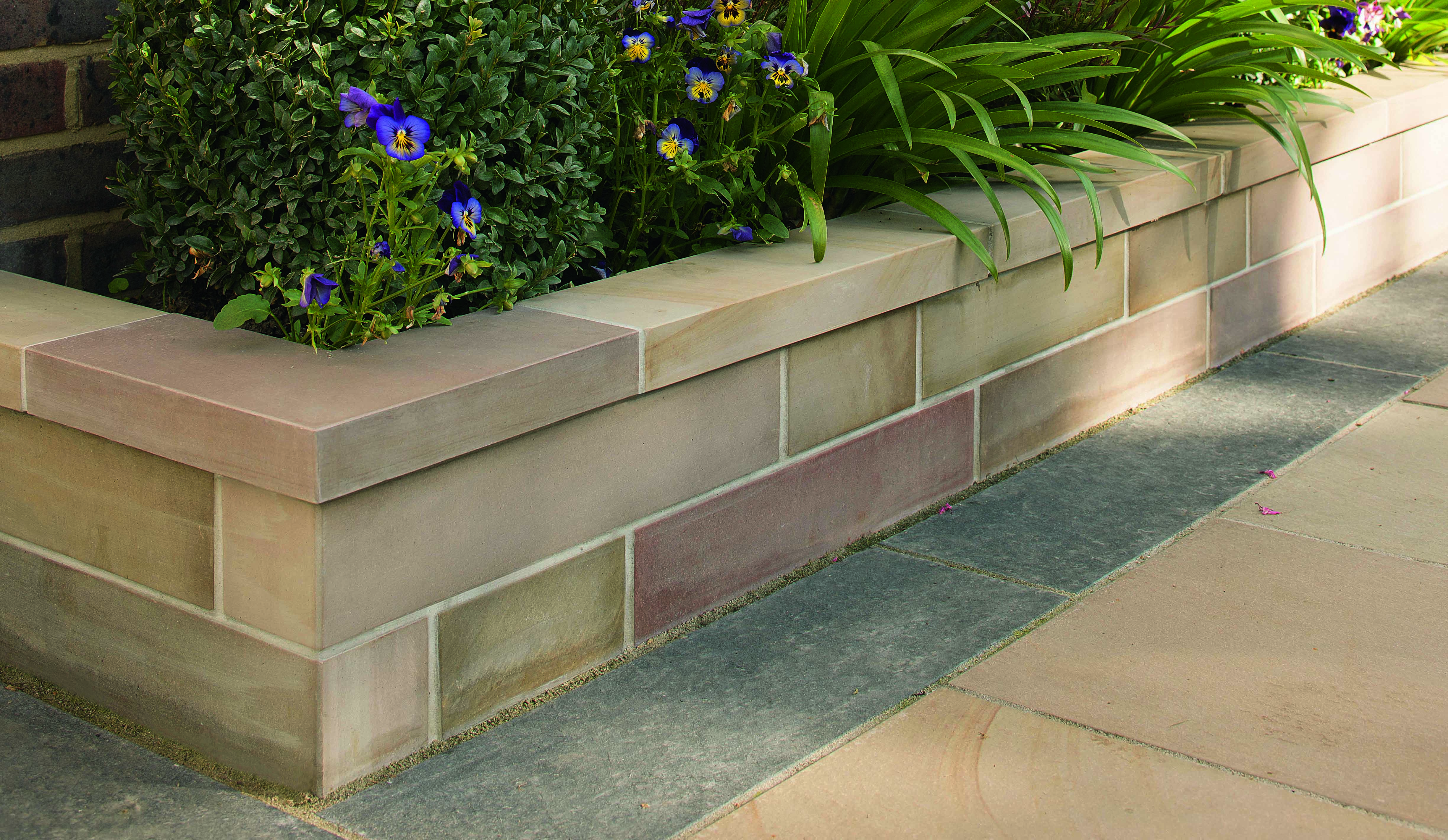
Stoneface® Sawn Veneer Walling
Raised beds are a great way to add greenery to your garden while avoiding grass. You can use them for a veggie garden or can fill them with beautiful blooms and perennial plants. They're easy to build, or you can purchase them ready-made at your local garden centre.
Surround them with paths or stepping stones to create a lush walkway between the beds and add a sense of depth to your garden.
9. Create intrigue with winding paths
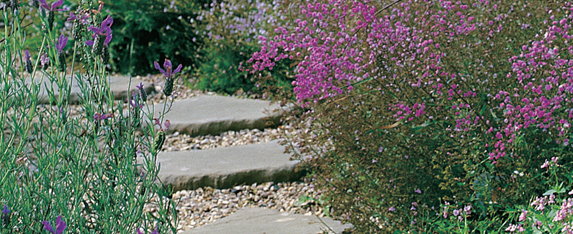
Curving pathways around dense garden beds create a sense of mystery and intrigue in a garden. Create some cosy nooks with a comfortable bench or a water feature that can be discovered when exploring the trails.
Natural stone paving slabs or wooden planks are ideal for creating elegant, environmentally friendly pathways. Fill the gaps between each paver with ground cover, or keep them further apart and place a layer of pebbles in between. Alternatively, add nutrients to the soil by using wood mulch for your path.
Consider lining the path with kerbs and edging that match your home's exterior or your paving stones to make the whole design scheme feel coherent and polished.
10. Relax with calming water features
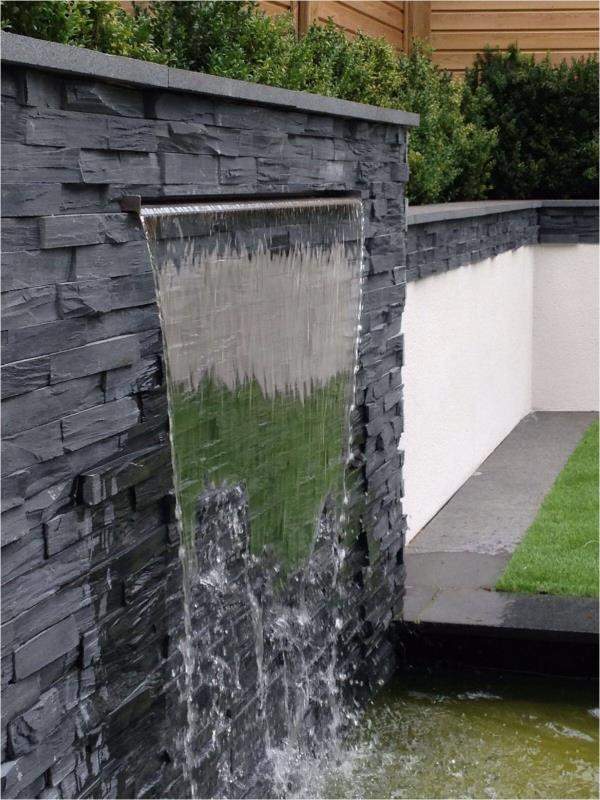
Stoneface® Drystack Veneer Walling in Nero Quartzite
Create a serene, grass-free garden by adding a pond or water feature. Surround the water feature with ornamental grasses and potted plants, and use patio pavers to create a path alongside it.
Build your own pond using river rock or garden walling. Add a liner to retain water and surround it with a few plants, and allow moss to grow over the stones to create an organic feel.
Beyond aesthetics, a pond is a fantastic way to attract more wildlife into your garden. Adding marginal plants to the slopes of a pond will enable aquatic insects and invertebrates to thrive which, in turn, will act as a draw for birds and bats.
If you have children, be sure to add some kind of barrier by the pond’s edge to help prevent them from falling in accidentally. You could also lay heavy-duty mesh that’s strength-tested to support the weight of a human just under the waterline.
11. Build a stylish decking area
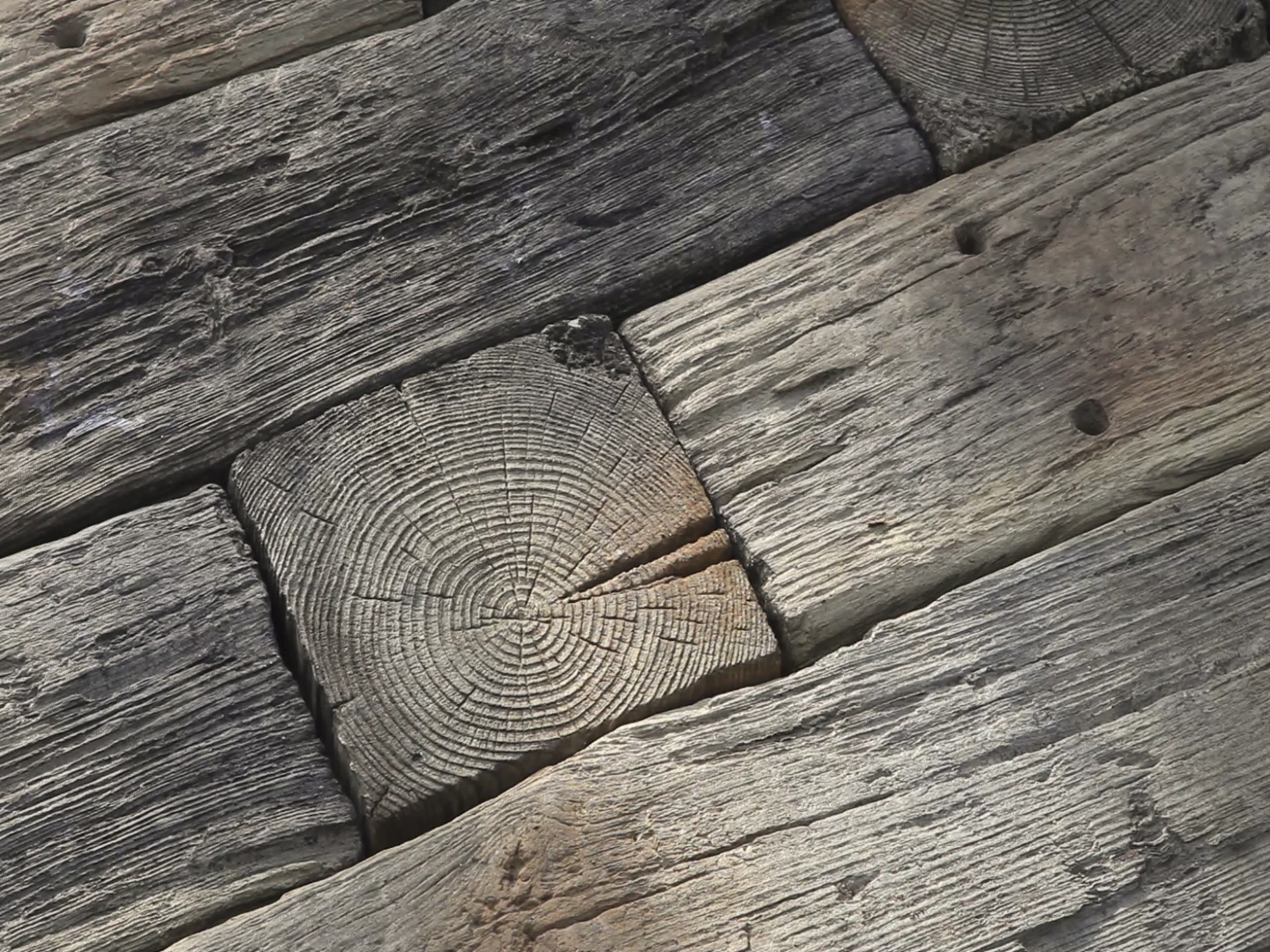
Woodstone® Sleepers
Create interest in your outdoor spaces by installing a decking area. Adding a deck to your garden will allow you to achieve a stylish outdoor living space that can be used throughout the year.
Extend the use of this area by adding a fire pit and some warm outdoor lighting - perfect for creating a sense of atmosphere and for keeping warm in the winter months. Rather than opting for traditional wooden decking, consider a concrete or porcelain wood-effect instead. This will be much easier to look after and stay looking good with minimal upkeep.
12. Create contrast with flower beds and paving
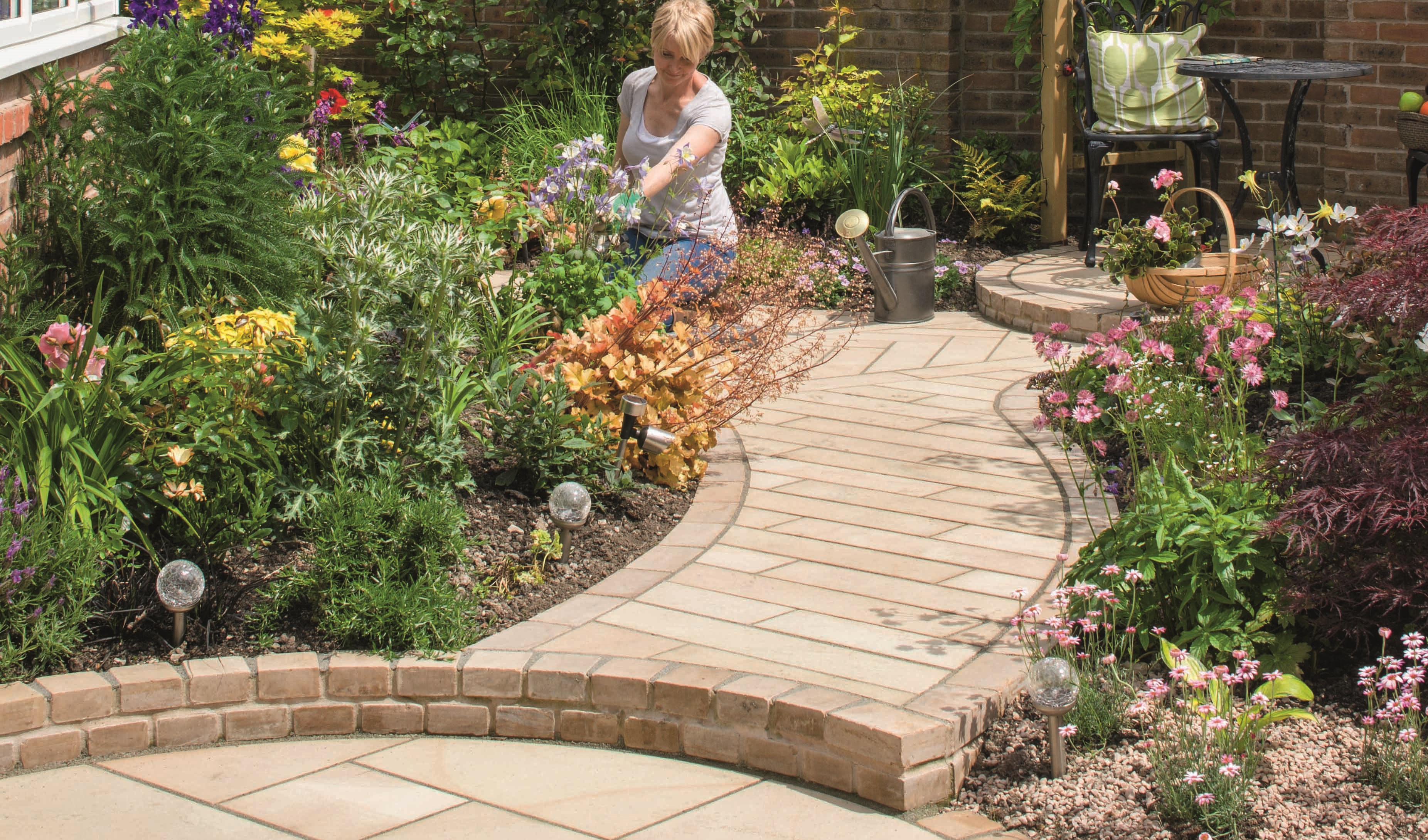
Sawn Versuro
One of the most popular low-maintenance garden ideas is to pave the entire area. While this is a perfectly acceptable no-grass garden idea, it can create a harsh environment and be a bit boring on its own.
Turn your paved, no-grass backyard into your dream garden oasis by adding lush greenery, colourful flowers and comfortable garden furniture. Leave some patches unpaved and fill them with shrubs and other foliage to soften the look.
The strategic placement of wooden planter boxes can add a natural feel to the area and is a fun way to create a container garden, and also gives the opportunity to grow your own food.
13. Go tranquil with a Japanese-inspired garden
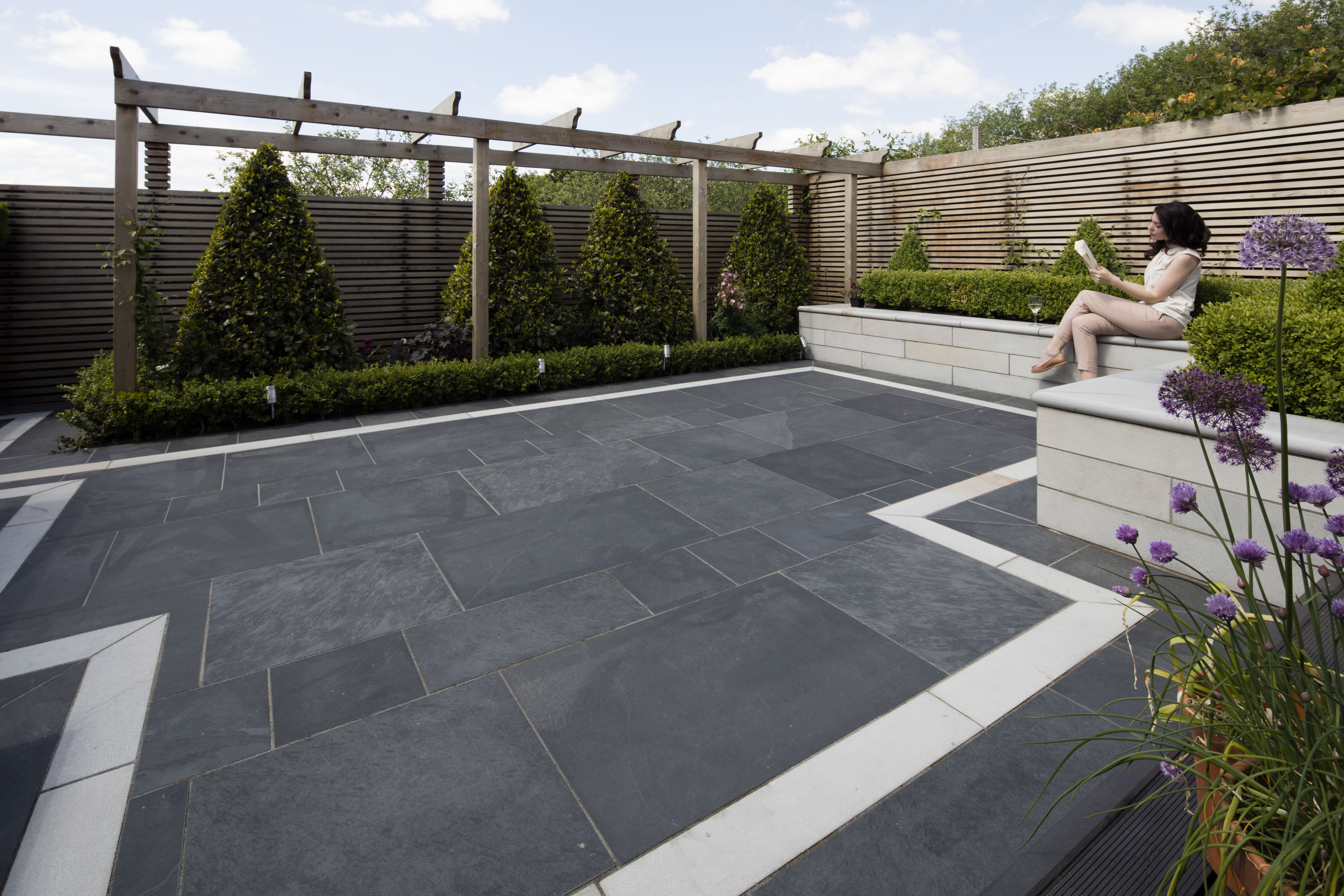
SYMPHONY Classic in Blue
If you're after a minimalist look for your grass-free garden, then consider creating a peaceful Japanese-style garden space. Build a rock garden with ornamental grasses planted amongst the stones and include carefully-pruned shrubs along the perimeter to add to the aesthetic.
Place bonsai trees alongside some simple garden furniture, or create an alternative rock garden in the form of a gravel zen garden. Complete the look by planting cherry trees or acers and installing a small pond or fountain.
Colour is especially important in Japanese culture and gardens. You could include a red and black pergola to suit the theme and paint any perimeter fences in black to create the illusion of them disappearing.
FAQs
What can I put in my garden instead of grass?
If you'd like to keep the green but get rid of the grass, try using a ground cover such as moss, white clover, or thyme. If you want a complete change, then adding raised beds, garden paving, and a deck will give your garden a stunning upgrade and is a fun way to create a no-grass garden.
What is the cheapest ground cover landscaping?
Gravel is one of the cheapest ground cover options for garden landscaping. It is versatile and allows for good drainage. If you prefer a green ground cover, white clover or thyme are affordable options.
What is the most low-maintenance garden?
A patio garden is a very low-maintenance garden, as is a rock garden. Add greenery with easy-to-grow potted plants, or grow a creeper along the walls. Plant drought-resistant plants amongst the rocks to add interest and beauty without adding extra work.








